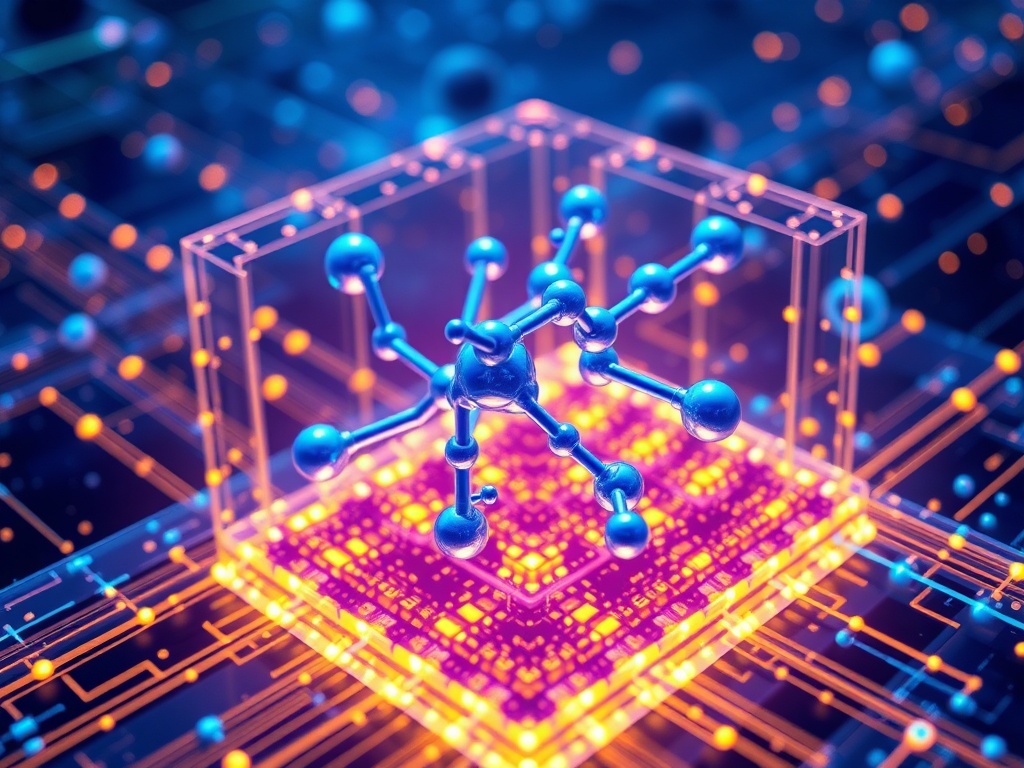The Dawn of On-Device Intelligence: Malaysia’s MARS1000 Processor

Edge AI Processors are revolutionizing the landscape of technology with on-device computing capabilities, bringing computation closer to the source of data collection. Among them, Malaysia’s MARS1000 by SkyeChip emerges as a powerful solution tailored for smart city evolution, heralding a new era of efficiency and privacy.
Revolutionizing Privacy and Efficiency with Edge AI
The evolution of Edge AI processors represents a significant leap forward in on-device computing, fundamentally altering how data is processed and managed at the edge of networks. Devices equipped with such processors, like the MARS1000 developed by Malaysia's SkyeChip, are pivotal in realizing the full potential of intelligent technologies in urban environments. By situating advanced computation capabilities directly onto devices—ranging from sensors to cameras—Edge AI processors are revolutionizing the privacy and efficiency of data handling in smart city ecosystems.
One of the key advantages of Edge AI processors is their capability to execute real-time processing. This immediacy in data analysis and decision-making drastically reduces the latency that plagues cloud-based processing systems. When milliseconds can determine the efficacy of traffic flow management or the accuracy of real-time surveillance for public safety, the ability of Edge AI processors to swiftly interpret and act on data locally becomes invaluable. The MARS1000 embodies this advantage, leveraging its integrated architecture to offer seamless, instant data processing for smart city applications.
Moreover, the structure of Edge AI processors like the MARS1000 is specially designed to balance computational power and energy efficiency. At their core, these processors often integrate specialized hardware components, such as Neural Processing Units (NPUs) and Graphics Processing Units (GPUs), optimized for the parallel processing demands of AI algorithms. NPUs, in particular, are adept at handling machine learning tasks more efficiently than general-purpose CPUs, enabling devices to execute complex AI models without the need to constantly communicate with far-flung data centers. The incorporation of these specialized components allows the MARS1000 to undertake sophisticated AI tasks directly on-device, from facial recognition in surveillance cameras to predictive analytics in traffic control systems, all while minimizing power consumption.
The focus on semiconductor design innovation further enhances the appeal of Edge AI processors. By utilizing cutting-edge fabrication technologies, such as the 7nm process used in the MARS1000, these processors achieve higher transistor density, translating into more computing power packed into a smaller chip. This miniaturization not only makes these processors suitable for integration into a wide range of devices but also significantly contributes to the reduction of energy usage, a critical factor for sustainable urban development. Together with the CPU, GPU, and NPU, Edge AI processors embody the forefront of semiconductor technology, capable of driving the secure, efficient, and intelligent operation of devices that form the backbone of smart cities.
In summary, Edge AI processors like the MARS1000 are at the heart of the transformation towards more localized, real-time processing in devices spread across urban landscapes. Their ability to reduce latency, combined with enhanced privacy measures through on-device data processing, sets the stage for a more responsive, secure, and intelligent urban environment. The integration of specialized hardware components and advancements in semiconductor design further underscores the technological innovation embedded in Edge AI processors, making them pivotal in the push towards more connected, autonomous, and smart city solutions.
MARS1000 Unveiled: Malaysia's Leap into Edge AI
In the ambitious leap towards establishing smarter cities, the unveiling of Malaysia's first domestically-designed edge AI processor, the MARS1000, marks a significant milestone. Produced by SkyeChip, this advanced piece of technology is at the forefront of transforming on-device computing, aligning perfectly with the detailed discussion on revolutionizing privacy and efficiency through Edge AI in the previous chapter. With its architectural design finely tuned for edge computing, MARS1000 enables devices such as traffic cameras and environmental sensors to process data locally, significantly reducing the need for continuous cloud connectivity, thereby mitigating latency and enhancing user privacy.
The MARS1000 processor is ingeniously constructed on a 7nm process, a cutting-edge manufacturing technique that allows for an incredible density of transistors on the chip. This not only leads to higher performance and efficiency but also makes the processor adept at handling multiple AI tasks simultaneously with minimal power consumption. By integrating a powerful combination of CPU, GPU, and NPU, the MARS1000 facilitates a balanced workload distribution for various computing tasks. This harmonious integration ensures task-specific processing capabilities, with the GPU handling complex mathematical computations, the CPU taking on general computational instructions, and the NPU specifically accelerating neural network computations. Such a robust setup is ideal for the swift, local processing of data required in applications crucial for the smart city ecosystem, including real-time traffic management and surveillance systems.
Consider the real-time computational demands of smart traffic management systems, where split-second decision-making is crucial for optimizing traffic flow and ensuring pedestrian safety. The MARS1000's capability to process data on the device itself allows for immediate analysis and reaction to dynamically changing traffic conditions without the latency that plagues cloud-dependent solutions. This local processing capability is not just about speed; it's also a boon for privacy. By processing sensitive data locally, rather than sending it across networks to distant servers, the MARS1000 significantly lowers the risk of data breaches, aligning with the privacy enhancements discussed in the preceding chapter.
Surveillance systems in smart cities also benefit immensely from the MARS1000's edge computing capabilities. With its integrated NPU, the processor excels at facial recognition and object detection tasks, processing this data directly on the surveillance camera. This local processing not only reduces the bandwidth requirements for transmitting video feeds to a central server but also ensures that sensitive visual data does not leave the device, thereby augmenting privacy protections. Moreover, by enabling real-time analytics, cities can swiftly respond to potential security threats without delay.
The design and capabilities of the MARS1000 SkyeChip illustrate a deep understanding of smart cities' complex needs and the evolving landscape of on-device computing. Its construction embraces the latest advancements in semiconductor design and integrates them with the specialized requirements of edge AI, making it an ideal candidate for the quick, local data processing needs of traffic management and surveillance systems, among other applications. This processor not only paves the way for Malaysia as a player in the global tech industry but also sets a new standard for the integration of edge AI in smart city infrastructures, providing a seamless transition into the upcoming discussions on the variety of potential smart city applications in the following chapter.
Smart City Synergy: Edge AI at the Core of Urban Innovation
The dawn of on-device intelligence through edge AI processors like the MARS1000 SkyeChip is transforming urban centers into smarter cities. This processor, Malaysia's pioneering venture into domestically-designed edge AI, is at the forefront of revolutionizing how cities manage their infrastructure, services, and interaction with citizens. The capabilities of the MARS1000 SkyeChip, especially in terms of on-device computing, herald a new era in urban management, offering numerous benefits across a wide array of smart city applications, from traffic control and public safety to environmental monitoring and infrastructure health.
In the realm of traffic control, the MARS1000 SkyeChip offers real-time processing power directly at the source of data—traffic cameras, sensors, and other IoT devices. This immediacy in data analysis enables dynamic traffic management systems that can adjust signals and traffic flow in response to live conditions, reducing congestion and enhancing road safety. By processing data on-device, the need for constant cloud connectivity is minimized, thereby reducing latency and ensuring that traffic management decisions are made swiftly and efficiently.
Public safety is another critical area benefiting from the Edge AI capabilities of the MARS1000. Surveillance cameras equipped with this powerful processor can perform real-time facial recognition, crowd monitoring, and anomaly detection without the need to send vast amounts of sensitive data to a centralized server. This approach not only speeds up the detection and response times to public safety incidents but also significantly enhances privacy and data security—a growing concern in densely populated urban areas.
Environmental monitoring systems are becoming increasingly important as cities face the challenges of pollution and climate change. The MARS1000 enables sensors placed throughout a city to analyze environmental data directly at the source. This local processing capability allows for a quicker response to environmental hazards such as air and water quality issues. Cities can use this data to implement immediate mitigations, such as altering traffic flows to reduce pollution hotspots or alerting the public to health advisories without delay.
Energy management and infrastructure health are equally critical for the sustainability and resilience of urban centers. The MARS1000 supports the deployment of energy-efficient IoT devices that actively monitor and manage energy usage in buildings and public infrastructure, contributing to overall energy savings and reduced operational costs. For infrastructure health monitoring, the on-device computing capabilities mean that sensors embedded in structures like bridges, tunnels, and buildings can instantly analyze data on physical conditions, predicting potential failures and enabling proactive maintenance. This capability ensures the longevity of city infrastructure and the safety of its inhabitants.
The advantages of edge AI in these scenarios are clear. By enabling rapid, local data analysis, smart city initiatives can operate more independently of cloud services, reducing their vulnerability to network outages and congestion. The reduced dependency on the cloud also mitigates data privacy concerns, as sensitive information can be processed on-device without the need to be transmitted over the internet. These benefits, coupled with the enhanced efficiency and responsiveness of urban services, place edge AI processors like the MARS1000 SkyeChip at the core of urban innovation.
As this technology continues to evolve, the potential applications and benefits for smart cities will only expand, making the integration of Edge AI processors an essential strategy for urban development. The MARS1000 is not only pushing the boundaries of what's possible in smart city management today but is also laying the groundwork for a future where cities can respond more dynamically to the needs of their citizens and the environment.
Energy Economy: Powering Smart Cities with Efficiency
In the era where sustainability marries urban development, the relevance of energy-efficient technologies cannot be overstated. Edge AI processors, exemplified by Malaysia's pioneering MARS1000 designed by SkyeChip, are revolutionizing the landscape of on-device computing by offering an unprecedented blend of power and efficiency. The significance of these processors in driving smarter, greener cities is evident as they facilitate the seamless operation of always-on sensors and IoT devices, which are the bedrock of smart city ecosystems.
The MARS1000, embodying the pinnacle of Malaysia's foray into domestic semiconductor design, is tailored for the rigorous demands of smart city applications. By processing data locally on devices such as traffic cameras or environmental sensors, it curtails the need for constant, energy-intensive data transmission to distant servers. This on-device computing model doesn't just slash energy consumption; it also accelerates decision-making processes, from real-time traffic management to proactive environmental monitoring.
Crucially, the integration of CPU, GPU, and NPU on a compact 7nm chip ensures that the MARS1000 processor achieves optimal energy efficiency without sacrificing computational horsepower. This synergy between high performance and low energy footprint enables smart cities to scale their IoT infrastructure sustainably. For instance, sensors equipped with such edge AI processors can remain operational 24/7, monitoring everything from air quality to traffic patterns, yet consuming minuscule amounts of energy.
This technological advance heralds a significant reduction in the overall power consumption of urban centers. By decentralizing AI processing to the edge, smart cities can mitigate the voluminous energy drain associated with traditional, centralized cloud computing frameworks. This shift not only preserves valuable electrical resources but also diminishes the carbon footprint of urban data management, aligning with global initiatives for climate change mitigation.
Moreover, the MARS1000 and similar edge AI processors champion the cause of sustainable urban management by facilitating intelligent resource allocation. Through real-time analysis of data from water supply networks, power grids, and waste management systems, these processors empower cities to pinpoint inefficiencies and rectify them promptly. The discernible outcome is a notable conservation of water, electricity, and other vital urban resources, culminating in a markedly reduced environmental impact.
In essence, the energy economy of smart cities is being redefined by the advent of edge AI processors like the MARS1000. Through their ability to power always-on sensors and IoT devices with unparalleled efficiency, these technologies are laying the groundwork for an era of smarter, greener urban environments. As cities evolve, the fusion of edge AI and sustainable development practices promises to foster urban ecosystems that are not only intelligent but also harmonious with the planet's ecological balance.
Looking ahead, as delineated in the ensuing chapter, the scalable nature of edge AI processors such as the MARS1000 is poised to accommodate the burgeoning demand for on-device intelligence across various sectors. The prospect of seamlessly integrating such processors into a wider array of applications underscores their potential to shape future technological landscapes, thereby solidifying their role in the advancement of global smart city initiatives and beyond.
The Edge of Tomorrow: Envisioning Future Scalability
The transformative potential of Edge AI processors like Malaysia's pioneering MARS1000, developed by SkyeChip, heralds a new era of on-device computing, specifically designed to meet the burgeoning demand for intelligent, localized processing in devices ranging from sensors to surveillance cameras. The inception of such technology promises to revolutionize smart city development, offering solutions that are not only energy efficient but are also imbued with the capability to scale alongside technological advancements and the increasing appetite for real-time data processing across various sectors.
Central to the scalability and versatility of edge AI processors is their architectural foundation. The MARS1000, leveraging a state-of-the-art 7nm process, offers an exemplary case study of how integrating CPU, GPU, and NPU into a single chip can furnish devices with a comprehensive suite of computational capabilities. This integration facilitates the execution of complex AI algorithms directly on the device, mitigating the need for data to traverse back and forth to a centralized cloud. Such an approach not only slashes latency but significantly enhances data privacy by ensuring that sensitive information is processed locally. The impact of these benefits is magnified in applications where immediate decision-making is critical, such as in real-time traffic management and urban surveillance for smart city applications.
Looking ahead, the scalability of edge AI processors like the MARS1000 is poised to evolve in tandem with the exponential growth in AI complexity and the surging volumes of data generated by urban IoT devices. The processors' versatile architecture enables seamless updates and enhancements, ensuring their adaptability to emerging AI models and algorithms. This intrinsic flexibility endows smart city infrastructure with a future-proof foundation, capable of accommodating unforeseen technological shifts without necessitating wholesale hardware overhauls.
The global market trends underscore a robust growth trajectory for edge AI processors. As industries beyond smart cities—such as healthcare, automotive, and manufacturing—begin to recognize the inherent value of localized, real-time processing, demand is set to escalate. In healthcare, for instance, edge AI processors could enable on-device analysis of patient data, streamlining diagnostics without compromising privacy. In the automotive sector, these processors stand to catalyze advancements in autonomous driving technologies by facilitating quicker decision-making directly within the vehicle's onboard systems. The scalability of edge AI processors ensures that as these sectors evolve, the processors can be tailored to meet their specific computational demands.
In this context, the MARS1000 serves as a blueprint for how edge AI processors can be engineered for maximum scalability and versatility. Its development not only positions Malaysia at the forefront of the edge AI revolution but also provides a template for how countries and companies worldwide can leverage this technology to foster innovation and drive economic growth. The advent of edge AI processors marks a pivotal moment, setting the stage for a future where the capabilities of on-device intelligence can be intricately woven into the fabric of daily life, making smart cities—and indeed, smart worlds—not just a vision, but a reality.
As the global landscape continues to shift towards ever-more connected and intelligent environments, the scalability and adaptability of edge AI processors like the MARS1000 will undoubtedly play a crucial role in shaping the technological evolution. Their ability to process vast quantities of data locally, with minimal latency and enhanced privacy, positions them as a cornerstone technology for not just the smart cities of tomorrow, but for a myriad of applications that stand to benefit from the dawn of on-device intelligence.
Conclusions
As a cornerstone of technological advancement, the MARS1000 SkyeChip embodies the power of Edge AI processors in driving smart city initiatives. It illustrates a future where on-device computing not only ensures privacy and responsiveness but also sets the stage for a seamlessly connected and intelligent urban fabric.



